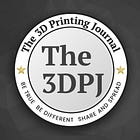The Black Box Problem: why closed AM software blocks the path to Rapid Manufacturing
RECODE.AM #1
For over a decade, the AM industry has had one main goal: to bring 3D printing into serial production of end-use parts. However, for most of that time, the focus has been in the wrong place — on hardware and materials — while software has remained virtually unchanged.
As 3D printers aimed to enter the world of rapid manufacturing, they continued to rely on software originally designed for rapid prototyping.
AM software has been one of the key barriers preventing the large-scale adoption of 3D printing in serious industrial applications. I wrote about this in an article back in April this year:
In serial production — especially in high-risk applications such as aerospace, defense, or medicine — trust in the manufacturing process is critical.
However, many current software solutions used in 3D printing still operate as so-called “black boxes” — closed systems with opaque, inaccessible, and unauditable inner workings.
This lack of transparency is a major obstacle not only to further industry development but also to ensuring safety, quality, and regulatory compliance in manufacturing environments.
Black box software is characterized by the fact that users have no insight into the algorithms processing input data; they are unaware of the exact mechanisms behind toolpath generation, energy strategies, or geometry repair routines.
For the system operator, only the end result matters — layer by layer, the finished model is sent to the machine. But what happens between importing a CAD file and sending instructions to the printer remains hidden behind a graphical interface and closed file formats.
In many cases, even the software itself does not log the history of operations, and the exported intermediate files contain no metadata that would allow for later understanding, verification, or reproduction.
This kind of opacity was tolerated in the early days of 3D printing, when the technology was mainly used for rapid prototyping. And even today, it doesn’t matter much in consumer 3D printing or in the production of simple, non-critical parts. But not in serious manufacturing sectors.
As AM evolves into a mature production technology, the need for a full audit trail — the ability to recreate every step of the process — becomes fundamental.
In regulated sectors like aerospace or medical, it’s not just important — it’s a formal requirement. The inability to clearly determine which parameters were used in the manufacturing of a given production batch may result in its recall, or in extreme cases, pose a threat to the end users' safety.
Another significant issue is the lack of access to APIs in many commercial AM software solutions.
Closed architectures limit the ability to integrate with other systems — such as MES, PLM, or ERP — making it impossible to create a coherent digital value chain. Moreover, without access to API documentation, it becomes impossible to automate and version operations in a DevOps environment, which in turn excludes the implementation of good software engineering practices known from more mature technology sectors.
As a result, many companies remain trapped in manual processes, relying on clicking through graphical interfaces and storing files locally on an operator’s computer — with no guarantee of repeatability or the ability to perform automatic quality control.
Black box software also stifles innovation.
The inability to modify internal algorithms means users are limited to vendor-provided solutions, with no way to extend them, test alternative approaches, or optimize for specific materials, geometries, or machines.
This poses a major barrier in fields that require flexibility and rapid iteration, such as R&D, low-volume production, or advanced applications that demand adaptive production strategies.
The solution to these problems lies in adopting an open architecture and modular software design approach.
In this model, the user has access to full API documentation, can version and document the algorithms in use, and build or extend system functionalities independently.
Such an approach not only increases transparency but also enables integration with other components of the production ecosystem — from design, through simulation and production preparation, to real-time monitoring and quality control.
What’s more, it allows for building a complete audit trail: every step, every algorithmic decision, and every parameter can be recorded, archived, and — when needed — reproduced or retrospectively analyzed.
Only in such an environment is true digital AM possible — where data flows seamlessly between systems, every operation is traceable, and users have full control over what happens at the code level, not just through the user interface.
Open, inspectable, and programmable environments are not a luxury — they are a necessity if 3D printing is to become the technology of choice for industrial applications.




